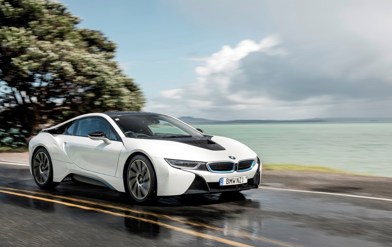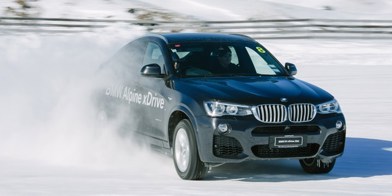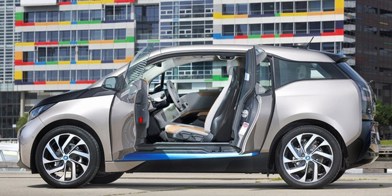Comparisons are inevitable, with this new Mercedes-AMG C63 to the V8 version, especially the revered normally aspirated V8, because it’s such a big change to an icon. Of all the Mercedes-AMG models, the C63 normally aspirated V8 traditionally carried the torch as the premier performance model, the hero of performance, in both sound and attitude: no turbos of the 4.0-litre latter model, just V8 thunder out an exhaust that made its presence known. Plus, that “63” has always stood for a 6.3-litre V8… itself a quirk, given its actual 6.2 capacity.

But it didn’t matter. Rose-tinted glasses may last longer than memories that fade, because the last aspirated V8 was sold in 2013, the biturbo 4.0-litre V8 assuming the role for the past decade. But, still a V8 and part of the holy trinity of German sports sedans, including the BMW M3 and Audi RS4.

Now, with the world getting greener and leaner, the Mercedes-AMG C 63 S E PERFORMANCE Sedan – its full name including spaces and capitals – is with us; and it’s a four-cylinder. That’s a hard pill to administer, much less swallow, the bad-smell face the most common reaction when telling enquirers of its engine. For meat-eating V8-lovers, the C63 Cabriolet still carries the 4.0 TT V8, for now; let’s move onto the new.

The latest C63 does indeed have a 2.0-litre four-cylinder. But like its four-cylinder siblings and predecessors, it uses the same M139 engine in the AMG A45 that made a massive 310kW, and 300kW in the C43; the new C63 outputs a massive 500kW combined (671bhp in old money!), made up of 350kW of electric-turbo-assisted petrol power, as used in the C43, plus another 150kW piled on from its 400 volt electric motor.
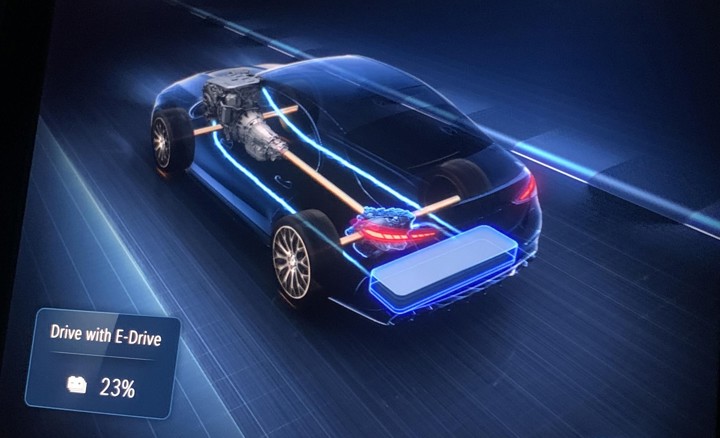
Interestingly, that’s both below and above the 375kW V8 model, and it’s thanks to the Plug-in Hybrid EV (PHEV) battery pack and rear-mounted motor.
However, keep in mind the battery is there for the headlines of power and speed, rather than economy. Its small 6.1kWh battery is good for just 13km of quiet cruising when fully charged, and it only drops to around 20% on the graph at 0km range, so it’s mildly confusing, but predominantly designed as a performance booster.

It does this by adding in a 75kW continuous boost, or up to 150kW for 10 second bursts when activated by the ‘kick-down’ switch, a haptic button under the throttle pedal. Think of it as steroids of the PHEV kind: Anabolic PHEVoids.
Given the PHEV’s ability to hold and save charge, this gives the C63 the ability to crawl away and arrive in silence (albeit with an external safety sound) when required. Plus, the smaller battery only takes 70 mins to charge from 0-100% on a 7kW Wallbox, with a max charge rate of 3.7kW.

And in Sport, Sport+ and Race driving modes, it’s aggressively recharging itself, recovering energy like L. Hamilton and G. Russell do in their F1 cars.
Fast? You bet your assisted engine! Mercedes-AMG claims 3.4 seconds to 100km/h, but we hooked up our RaceBox timer, and blasted to a time of 3.2 seconds; twice, back-to-back.

Which also raises the other comparison to the old V8, which was rear-wheel drive. That same Lewis Hamilton famously – somewhat laughably - got his C63 impounded back in Melbourne 2010 for doing a burnout on the roads in his rear-drive V8 C63 during the F1 weekend, that the spectators whom he did it for loved it.

No such risk with this C63, as it’s all-wheel drive, with the electric motor mounted on the rear axle – however, unlike normal all-wheel drives with ultimate grip, AMG has engineered in some excitement: when it is hammer time, the C63 squirms and shifts ever so slightly with a hint of wheelspin from both the front and rear tyres, helping create a bit of drama that tells the driver they should sharpen up and fly right – but not so much that they can't keep the throttle buried.

Back it off and the intelligence of the hybrid system starts to make sense in a different way: selecting the different modes on the steering wheel rotary dial relaxes the throttle response and varies EV use, customised for each mode. There is B (for Battery Hold) mode, that retains charge level, while it’s the Sport and Track modes that offer the most regen. So, there’s a bit of active battery management required for driver intent and purpose, again in the style of Hamilton/Russell tweaking and turning wheels and dials on their W15 E Performance.

Gone, however, is the centre console touch-pad that interfaced with the touchscreen: in its place, a more practical storage area for phones, cup-holders, USB-C ports, and a smartphone charging pad that’s deeply tucked away, largely inaccessible, virtually forcing the user to ignore it during driving… or, ironically crash while trying to access it. Its semi-hidden, easily forgotten pocket is, however helped by a phone reminder message that pops up when the engine is turned off.

For those who want to dig deeper into the MBUX, there’s a screen for live temperatures of the gearbox, engine, oil, water, cat converter and even the battery. Plus, there’s a bottom row of readily accessed tactile buttons that direct straight to the AMG menu, cameras, or other handy shortcuts such as a car wash mode that folds the mirrors, closes the windows and deactivates the rain sensor for the wipers, while limiting speed to 20km/h.
The left dial on the steering wheel also alters other parameters such as exhaust (yes, the four-cylinder, not V8 sound) and suspension settings: a C63 driver should never be bored.

In fact, the C63 has so many layers, it’s like the levels of a video game, for which we’d need more pages to divulge. On the big central MBUX screen, there’s the familiar layout of the luxury and comfort settings, but also extra AMG menus, for things like track mode and lap timing and data, plus even a drag mode, and a telemetry page. We couldn’t try the track mode page, as just 30 international tracks are mapped, none in NZ, but with another 40 planned for the inventory. However, the car can trace the track outline and create a track. If and when it adds NZ tracks, it’s good to know there are ‘boost’ sections, where the battery energy is managed and delivered, and driver-selected for either a one-lap qualifier, or a multi-lap endurance mode, complete with a battery cooler to keep its temperature at optimum, around 45 deg C.

There are, however, displays for both throttle and brake percentage, which is ideal for boring friends and unappreciative spouses.
A battery charging screen is also new, showing the speed at which the battery both discharges and charges while driving, or when hooked up to a charge cable.
There’s even a cute IWC watch screen, for the time and date, or stopwatch.
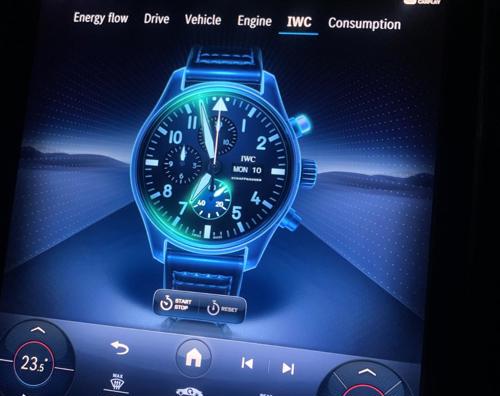
The gauges and displays are configurable within the different modes, but Classic is always, er, classic, with clear dials and a new tacho that swings down from the 12-O’Clock vertical position. But all that seems rather secondary to the technical marvel that is happening underneath within the astounding technology of the engine and electric systems.
Has the Mercedes-AMG C 63 S E PERFORMANCE Sedan lost some of its soul with the loss of the V8 and its rumble? Absolutely. Is it a faster, more accomplished, more dynamic and a better all-rounder that’s positively charged and insanely enjoyable? It absolutely, resoundingly is.
TEAR IT DOWN
Mercedes-AMG C 63 S E PERFORMANCE Sedan
ENGINE: 2.0-litre petrol turbo four, plug-in hybrid 16kWh battery
POWER: 500kW combined (350kW +75kW EV continuous, 150kW EV peak for 10 secs), 1020Nm
CHARGING: 3.7kW AC
GEARBOX: Nine-speed auto
0-100KM/H: 3.4 secs (claim), 3.2 secs (tested)
ECONOMY: 6.1l/100km (13km EV range)
PRICE: $199,938
























